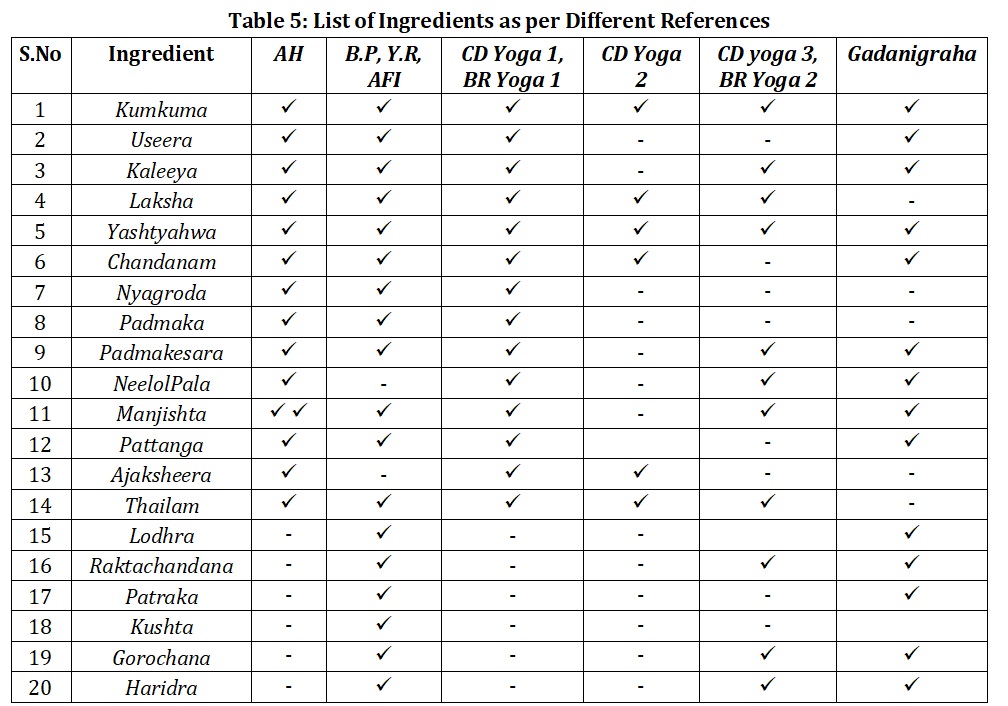A Comprehensive Review on Kumkumadi Thaila
DOI:
https://doi.org/10.47070/ijapr.v11i11.3015Keywords:
Cosmetics, Hyperpigmentation, Ksheeram, Kumkumadi Thaila, ThailaAbstract
Kumkumadi Thaila is a popular classical Sneha preparation indicated for external as well for Nasya purpose. It is mentioned in Kshudra Roga chikitsa but on general practice used for cosmetic purposes especially for hyperpigmentation. Cosmetics are mixtures of chemical compounds derived from either natural sources or synthetically created ones used to cleanse or protect body or skin. Hyperpigmentation is a condition in which skin patches became darker in colour than normal. Present study aimed to compile the available classical references regarding the ingredients of Kumkumadi Thaila to evaluate their similarity and differences. Total 14 drugs including Ajaksheera are the ingredients of this formulation based on reference of Ashtanga Hridayam. Kumkuma, Yashti Madhu and Thila Thailam are common ingredients in all reviewed Yogas. Generally, Kumkumadi Thaila is a purely herbal formulation. Some references contain the mineral drugs such as Gairika (Red Ochre – Ferric oxide (Fe2O3) and Manashila (Arsenic disulphide (As2S3)) as ingredients. The animal products such as Gorochana and Madhucchista are also there according to some references.
Downloads



